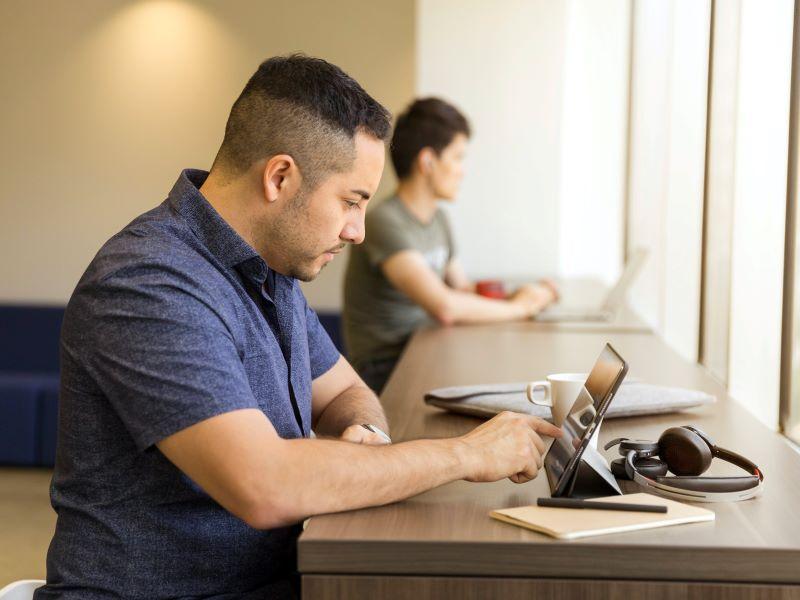Online learning emerged in the 1980s, with the availability of online courses increasing rapidly throughout the 1990s and subsequent years. Vast improvements have been made to online courses since their beginnings, moving from static text to the incorporation of multimedia and other delivery methods designed to boost student learning. One area in which online learning can still improve, however, is student engagement.
Online learning can leave students feeling lonely, disengaged and unmotivated. Because they do not attend classes in person on campus, they can lack a sense of belonging and do not readily identify with their university. Often they have never met their instructors in person and may never have visited the campus. They do not have a real opportunity to become acquainted with classmates and form friendships that can be hugely influential during and after college.
- Group work: improving communication, participation and dynamics
- Relationship building among globally diverse students in a borderless university
- Four ways to address breakout room anxiety
Incorporating group activities into online college coursework can help increase engagement and a sense of belonging. With group work, online students collaborate to complete short assignments or long-term projects, all the while interacting with each other on a more personal level.
In the courses we offer using the ActiveFlex format at Athens State University, which combines active learning with HyFlex delivery, we incorporate a short group activity into every live class session. Many classes include a larger group project. Based on our experience using group activities in live online classes, we offer three suggestions for increasing student engagement in online classes:
1. Use breakout sessions
Use the breakout session functions in the videoconferencing software used for the live online class; these are known as breakout rooms in Zoom and Google Meet, and breakout sessions in Webex. This allows the instructor to place students into smaller groups and have them work together online for short assignments. As you use breakout sessions in subsequent online class sessions, you can change group assignments so that the students are interacting with different classmates. This supports student engagement with an increasing number of classmates each week, which can enhance the students’ sense of community and connectedness.
2. Facilitate interaction
Initially, students may be reluctant to interact during group work, which can lead to feelings of awkwardness and self-consciousness. As the instructor, you can provide clear activity frameworks and guides so that the group members can get to work right away without the need for deciphering their next steps. During live class group activities, enter the breakout session as the activity progresses to determine the level of collaboration and interaction and take steps as needed to encourage increased interaction. When students are working together on long-term group projects, consider making one group interaction a live online meeting that all must attend. Incorporate roles into the project work – such as team leader, note taker, editor – and require each student to take on at least one role. Their role in a group project will increase their engagement and ownership as they fulfil their project responsibilities.
3. Webcams on
Encourage students to use their web cameras, at least during group work. Many students prefer to attend a live online class without turning on their webcams, but this can add to the feeling of anonymity. By using their webcams during group work, students can see each other and their environments. No longer are their classmates just names on a screen with a disembodied voice; they are real people in their homes or in their workplaces. Remind them that it is acceptable if a pet or a child appears occasionally in the background – this just adds to the humanity of the students and helps them connect to each other.
In our experience, most students are initially reserved and unsure about group interaction during online classes. In fact, some voice displeasure at the idea. However, they quickly become accustomed to the practice and more engaged with the instructors and their classmates. Class discussion increases and the students indicate that they learn more from their interactions with their classmates as they complete their assignments together online. The students also help each other, assisting with in-class technical issues as well as offering advice about other courses at the university. Friendships are formed based on common interests, and many of these continue well after the end of the courses. Additionally, as students meet and interact with their instructors and classmates, they begin to identify more with the university and feel a part of the college community. This increases their engagement in future courses and with the university as a whole.
Increasing online student engagement via group activities requires intentionality on the part of both course designers and instructors. This effort, though, can result in online students who are more connected, more involved and more motivated to succeed.
Tracey DeCicco is an ActiveFlex technology support and content development specialist at Athens State University.
If you found this interesting and want advice and insight from academics and university staff delivered direct to your inbox each week, sign up for the THE Campus newsletter.




comment